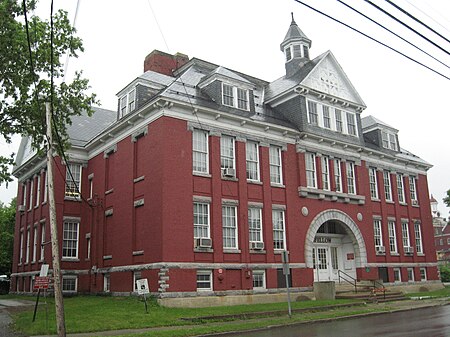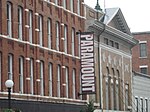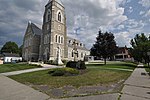Longfellow School (Rutland, Vermont)
1890s architecture in the United StatesBuildings and structures in Rutland, VermontColonial Revival architecture in VermontNational Register of Historic Places in Rutland County, VermontSchool buildings on the National Register of Historic Places in Vermont

The Longfellow School, also known as Church Street School, is a historic school building at 6 Church Street in Rutland, Vermont. Built in 1890, it was the first purpose-built graded school in the city, serving as a model for later schools. It was listed on the National Register of Historic Places in 1976. It now houses the administrative offices of the city schools.
Excerpt from the Wikipedia article Longfellow School (Rutland, Vermont) (License: CC BY-SA 3.0, Authors, Images).Longfellow School (Rutland, Vermont)
Church Street, Rutland City
Geographical coordinates (GPS) Address Nearby Places Show on map
Geographical coordinates (GPS)
| Latitude | Longitude |
|---|---|
| N 43.608611111111 ° | E -72.978333333333 ° |
Address
Trinity Episcopal Church
Church Street
05701 Rutland City
Vermont, United States
Open on Google Maps







